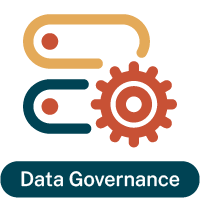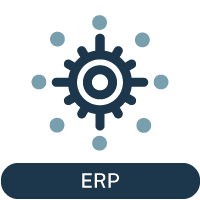Last month, our Founder and CEO Kelle O’Neal joined DATAVERSITY’s fourth annual Enterprise Data Governance Online event, a full day of live webinar sessions presented by industry experts.
EDGO’s format is designed to help anyone working with data to execute and implement a successful data governance program, and First San Francisco Partners is pleased to be, once again, participating in the event.
Kelle’s Data Governance 2.0 presentation was part of the EDGO topics that included:
- Data Quality for Non-Data People
- Understanding Data Lineage
- Trends in Data Governance
- Governance Through Glossaries, Dictionaries and Catalogs
- Non-Invasive Metadata Governance
What follows are highlights from part of Kelle’s talk, where she discusses how to ensure representation and accountability for modern data governance, prioritize efforts for key business objectives and recognize varying levels of governance maturity.
If you’d like to hear the rest of Kelle’s presentation and receive the slides and recordings from all six presentations, you can request them via the EDGO website. (Register for access to recorded sessions.)
Ensuring representation and accountability for modern data governance
As we think about the expansion of data governance across broader geographies and across more lines of business and more types of data, the scope of governance changes and the view of representation and accountability also needs to change.
As data governance has evolved from structured data to Big Data to knowledge management, it’s important to consider who is accountable for all types of data. It’s not just master data management and data lakes, it’s also who owns and controls your intranet with all its structured and unstructured data that needs to be protected or can be leveraged, reused and optimized. Is it IT? Is it a line of business? Is it HR? Should it be IT — and why or why not? Who should it be from a content perspective?
As governance extends beyond just data and into analytics, algorithms and models, it’s important to understand who should be accountable for the models, both from a creation perspective, as well as an appropriate-use perspective.
As we look at governance extending beyond just data and into analytics, algorithms and models, it’s also important to understand who should be accountable for the models, both from a creation perspective, as well as an appropriate-use perspective. And this begs the question — when you assign accountability, should it lie with the creators of the data or the model, or the users of the data or model? Who should have the authority to determine permitted use? All of these issues need to be considered to ensure that once accountability is identified, it is both appropriate and realistic.
The same types of questions apply to who should be represented (and not just who is accountable), and which teams should be represented in governance. It’s important to understand the balance between representation and speed of execution. Because, sometimes with greater representation, speed of execution slows down.
The pace of change and the demand for speed is increasing all the time. Sometimes broad representation is the enemy of the speed of delivery. It’s important to understand the trade-offs that occur with that decision and ensure that stakeholder buy-in occurs when those trade-offs are made. Your own organizational norms need to be considered, too, since some are more consensus-based than others.
Finally, representation and accountability need to be sustainable. This is where leveraging your organizational change management (OCM) best practices come in to help drive adoption. Proactive OCM can help identify how the new governance practices fit in with existing operational processes, so that governance is integrated into those business processes and not isolated from them.
Prioritizing effort for key business objectives
For most organizations, both the pace of change and the volume of work is increasing. This creates a greater need for organizations to focus on prioritization and efficiency. With data having a lot of inter-dependencies, this gives the organization an opportunity to take advantage of those inter-dependencies and to improve data understanding and transparency as a cumulative process. It’s like a taking a kernel and, as you develop more consistency, accuracy and understanding of that core kernel of data (e.g., a master data domain), you’re also improving the quality and documentation of other related data elements, as well. Understanding these data elements can then be extended to related elements in other data domains. This way, you can build upon your knowledge and the outcome of data governance and then, as you build on it, prioritize appropriately.
If you apply the Pareto Principle to data governance, 20% of your data and data challenges impact 80% of your business challenges.
Think about the Pareto Principle (the 80/20 rule) where 80% of the effects come from 20% of the causes. If we apply this principle to governance, it’s implying that 20% of your data and data challenges impact 80% of your business challenges. Therefore, identifying and prioritizing that 20% of your data is critical.
Within this “most important data” segment are data elements that can impact the business’ vision and objectives, which everyone in the organization should be headed toward. Mapping those strategic objectives to the data elements and, therefore, the governance requirements, helps you to see what is really critical and and what can influence that 20%.
It’s also important to think about how you can optimize resources, because there always seems to be too few. How do we take advantage of other resources in the organization to extend the reach of governance? By engaging with other processes and other decision-making groups and organizations, this helps to leverage those resources to participate in and deliver on governance expectations. For example, engaging with a project management organization is a great way to leverage project teams to verify and document data and metadata as part of a project, which then can be reused outside of that project and across the enterprise.
Bottom line is this: It’s important to focus on critical capabilities that support those critical business outcomes. There is always more work needed than have you resources for, so it’s important to ensure that activities are prioritized based on business need and strategic importance, not just who is screaming the loudest.
Recognizing varying levels of maturity
As we think about data governance expanding across data domains, categories of data, along the supply chain, across practice areas and geographies, each of those areas of governance will mature at a different pace — meaning, the level of maturity is going to vary. This will result in a greater burden on the data governance “office” to maintain project plans, standards, artifacts, training, communication and other things that are needed to effectively manage the program and, therefore, manage data governance as an operation.
It’s also important to focus on the reusability of the governance content and easy access to the content to ensure that the people who need it can do so on a self-service basis without the data governance office having to push information out.
Technology can be leveraged in this regard to automate as much as possible and provide a platform that houses the content and manages that access. Some of today’s data governance solutions are leveraging concepts that are used in social media to help improve user engagement and experience and, thereby, are creating more of the content that’s needed within the tool and within that business process.
Remember, teaching the broader organization to prioritize their own activities based on business priority will be important to ensure that all parts of the governance program are focused on business results, not just content development.
Register now for access to Kelle’s full session.



